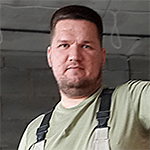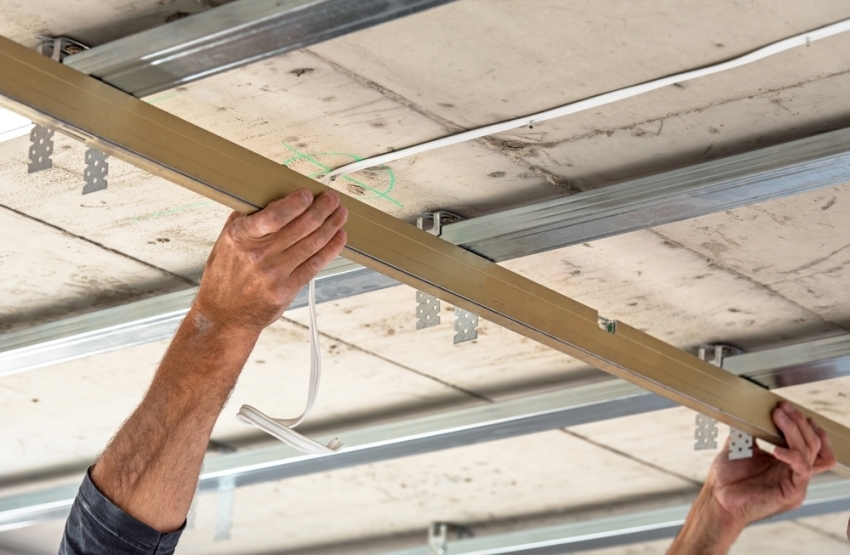Content
- Choose a putty for drywall: dry mix or ready-made?
- Start or finish?
- The basis of the putty mixture
- Procedure for plastering plasterboard walls
- Training
- Joint Processing
- Putty corners
- Putty surface
- Putty nuances for different finishes
Drywall is a convenient material to use, allowing you to quickly finish the apartment. At the same time, the necessary evenness of the walls and even the ceiling is achieved. But at the joints of the drywall sheets, seams are formed, on each element there are many recesses from self-tapping screws. In order to ultimately become perfectly flat, putty is applied for drywall. Let's try to figure out the choice and technology for applying this material to plasterboard walls.

Choose a putty for drywall: dry mix or ready-made?
Putty mixtures can be dry and ready. If the question is, which mixture is better, then when answering it you need to consider several factors:
- At the same level of quality, finished putty is more expensive.
- Dry putties last longer and are less demanding on storage conditions. It should be borne in mind that they enter stores, passing through many warehouses, as a result, the finished mixture may be unusable within a couple of months after purchase.
- The dry mixture must be properly prepared, having achieved the desired consistency and lack of lumps, beginners may have difficulty with this process. In addition, you will need a special tool - a mixer or drill with a nozzle.
- Dry putty can be made more liquid or thick depending on the purpose of the application. For example, joints and seams are easier to cover with a thicker mortar; putty should be thinner for the finish layer than for the starting one.
- Ready putty, which stood for some time in an open container, is not subject to storage.
Tip. To save the finished putty until the next cycle of repair work, you need not to scoop it directly from the bucket, but to postpone the amount necessary for work in another container. A bucket with unused balance must be tightly closed. In this case, the finishing material can be stored for another six months or even more.

Thus, the finished putty is more convenient to use and does not require preparation, therefore, it is well suited for beginners, but dry has a lower cost and allows you to adjust the consistency depending on needs.
HELPFUL INFORMATION:Lags - what is it?
Start or finish?
For high-quality finish of gypsum plasterboard surface one type of putty can not do. For the sealing of joints and continuous puttying, different mixtures are used:
- For joints and seams, a mixture specially designed for these purposes is used - Knauf Uniflott, “Knauf Fugen”,“ Volma Shov ”, - or, at worst, an ordinary starting putty of good quality.
- To putty the entire surface of the GCR, the starting and then the finishing mixture or universal, which can be used to replace these two types, is used.
Therefore, if you are wondering what kind of putty to choose for drywall - the best decision will be to buy a universal mixture and a special mixture for joints.

The basis of the putty mixture
Also putties are:
- Cement This type of finish is best suited for bathrooms, toilets and kitchens, since cement can easily withstand moisture.
- Gypsum. Gypsum mixtures, on the contrary, are best chosen for dry living quarters, since gypsum does not tolerate high humidity.
- Polymer. This type of putty is the most versatile. It is it that is best used for decorating drywall sheets. Polymer mixtures have high ductility and a fairly low consumption.
In no case can you use alkyd putty on drywall. This will lead to the destruction of the upper layer of drywall sheet.
Such characteristics of various putties as frost resistance, fire resistance, etc. do not have much significance for the interior decoration of the apartment.

Procedure for plastering plasterboard walls
Like any other type of finish, putty has a special application technology, which consists in the order of actions and compliance with certain rules.
Training
First you need to prepare the walls for the putty process. The wall should be flat, without protruding hats of screws (they need to be screwed in 1 mm deeper than the level of the sheet). It is also necessary to check the joints of the gypsum plasterboard: the paper layer should not peel off from the inner filling of the drywall sheet. If this happens, carefully cut off the peeled portion and sand the surface. Otherwise, from such joints drywall can eventually fall off or go blistering.
HELPFUL INFORMATION:The main types of primers for wall treatment
Next step - drywall priming. This is best done with an acrylic based primer. It must be applied in two layers, using a wide soft roller to evenly coat the surface. The final layer of soil is applied only after the first has dried.
For ease of application, you can purchase a primer painted in a certain color. Then you will definitely see which part of the wall is already covered with an undercoat.

Joint Processing
Putty plasterboard walls should begin with filling jointsthat are glued with reinforcing tape. Stir the dry mixture to a thick sour cream.
A putty layer is applied so that all joints and joints are completely filled with it. The excess is carefully removed with a spatula. After applying the first layer, you need to wait until it dries, and apply another layer of the mixture to the joints. And after the putty has completely dried, it can be gently sanded.
If in some places the sheet of drywall is adjacent to the plastered wall, the seams between them are glued with a release polymer self-adhesive film.
Here you can putty the hats of self-tapping screws - this is done with crosswise movements in order to fill the holes as densely as possible.

Putty corners
This is the most labor-intensive work, which is carried out in two stages.
First, one side of the corner is putty. The surface must be carefully leveled, especially in the part that is closer to the corner. After applying the second layer and drying it, you can begin to work on the second side of the corner. Thus, you need to create a perfectly even connection of drywall. Here putty is put in a thinner layer.
In order to create a perfectly even angle, you can use a special corner spatula.
On all slopes of windows and doors, you need to attach an aluminum construction corner to create an even and fairly rigid angle. You can attach it to the wall with a small amount of putty mixture. The corner must be cut to the size of the slopes and set around the perimeter of the openings or other external corners.
HELPFUL INFORMATION:Features of installing drywall boxes in the bathroom
After installing the corners, they are smeared with putty so that the mixture penetrates into all openings. With a wide spatula, the applied layer is leveled at the corner and surface of the drywall sheet.

Putty surface
After you have processed all the joints of drywall sheets and the corners of the room, you can begin to finish puttying the entire surface of the wall.
How to putty walls? The first layer of the mixture should not be made too thick, the wider the spatula, the better. After the first layer has dried, the second one is applied, and then it is important to sand the surface of the entire wall well with a nylon-skin.
At the last stage, the putty wall is treated with a primer in two layers in the same way as for the first time.
This method will allow you to align the drywall walls before they are finished.

Putty nuances for different finishes
There are several nuances when processing plasterboard sheets with putty, on which the quality of the final finish will depend:
- If you plan to stick paper wallpapers on the walls, then you must stir the putty with great care. You also need to take care of eliminating all possible flaws in the wall, since all the bumps and cracks appear through the wallpaper.

- When used in the decoration of heavy wallpaper, it is necessary, on the contrary, to create a rough layer of putty. This will make it easier to stick on the wallpaper and not be afraid of their peeling off due to better adhesion of materials.
- The most difficult thing is to putty the walls for their further painting. In this case, the surface should be perfectly flat. To achieve this effect, you can consider the wall under the light of a lamp (a shadow will reveal small irregularities).
Finishing plasterboard walls with putty will allow you to prepare the room for finishing with any material. The main thing is to observe the technology and act as carefully as possible. Then you can not worry about the durability and beauty of your walls!

EXPERT SITE
Tsugunov Anton Valerevich
Master Station Wagon
- Since 2003, I have been engaged in the repair and decoration of premises.
- Over 100 completed objects.
- I appreciate the quality, more than the quantity!
Personal page >>>
Friends!
I offer you the service "Friend Builder"
As this site develops, subscribers and visitors are turning to me more and more often asking for help with advice on various issues of repair and decoration.
Questions are sometimes asked very complex and interesting. You can’t write an article for each situation, so I decided to advise you individually.
Thanks to you, friends, a new direction of my favorite work has been born - share your experience and benefit everyone who is undergoing repairs!
Get a one-time consultation from me >>>
Order full apartment repair support >>>


